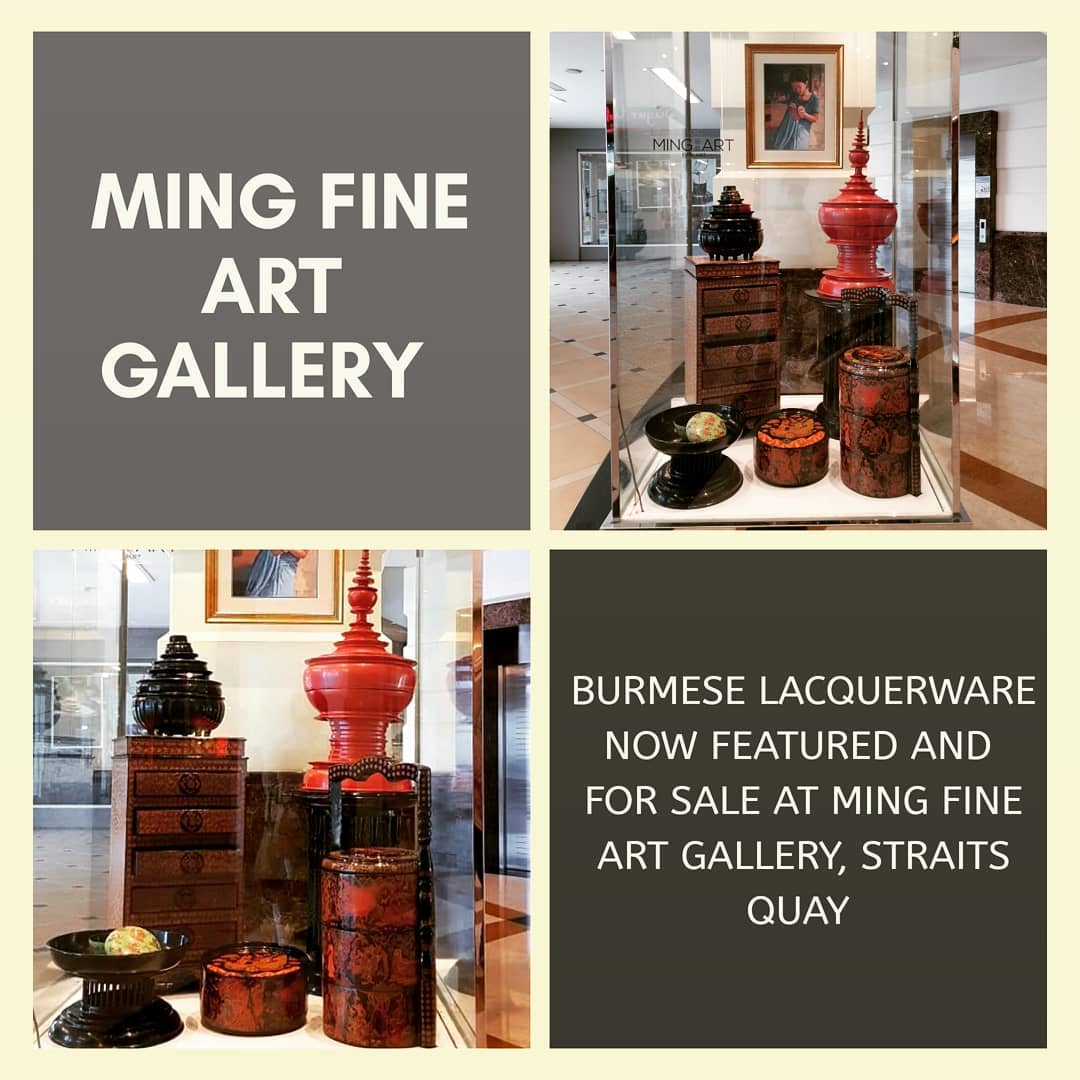Lacquerware was a popular gift to foreign envoys given by members of the Burmese court.
The privileged used lacquer boxes to store jewels, letters, and sacred Buddhist manuscripts known in Pali as Kammavaca.
Lacquer vessels were also used during momentous Buddhist ceremonies for presenting food to monks. People at all levels of society used lacquerware in their daily life to store food, refreshments, clothing, cosmetics, flowers, as well as betel nut ingredients, a mild intoxicant that is chewed as a quid.
Lacquer (called thit-si in Burmese) is a sap taken from the Melanorrhoea usitata, a tree that grows wild in Burma, mostly in the Shan States.
Naturally black, other colours are achieved using additional pigments such as cinnabar (red) from China, orpiment (yellow) from the Shan states and green by combining the two.
Blue comes from indigo, usually obtained from India. The art of achieving just the right colour, particularly red/orange is a closely guarded secret of lacquerware artisans. It is said that the secret of the composition is passed down only from father to his most trusted son.
Available exclusively at Ming Fine Art Gallery, Straits Quay, Penang.

